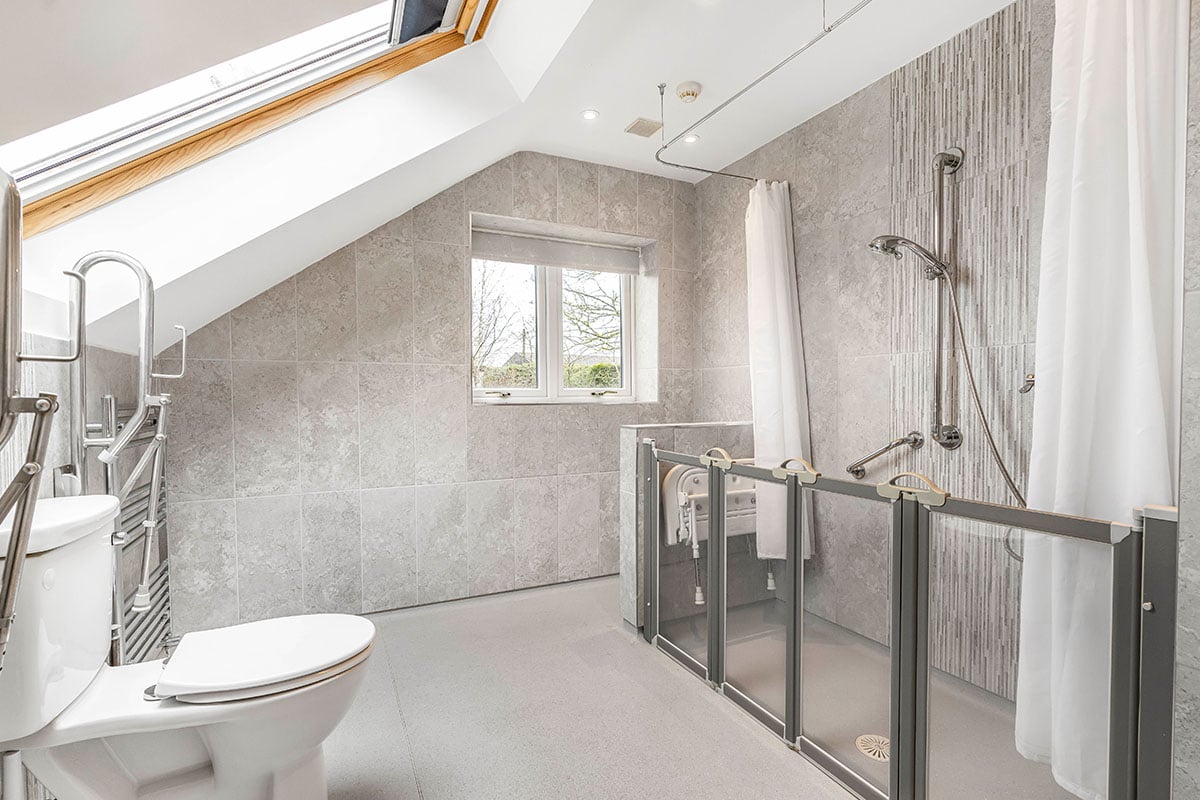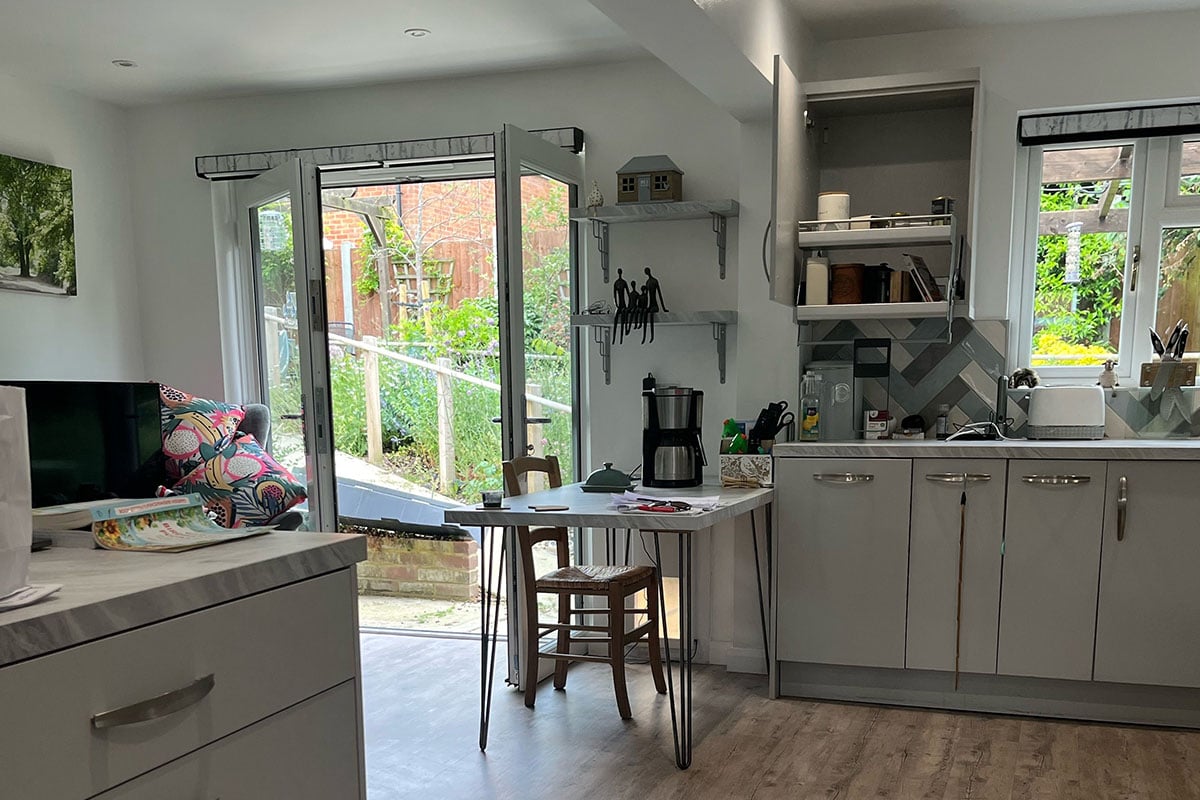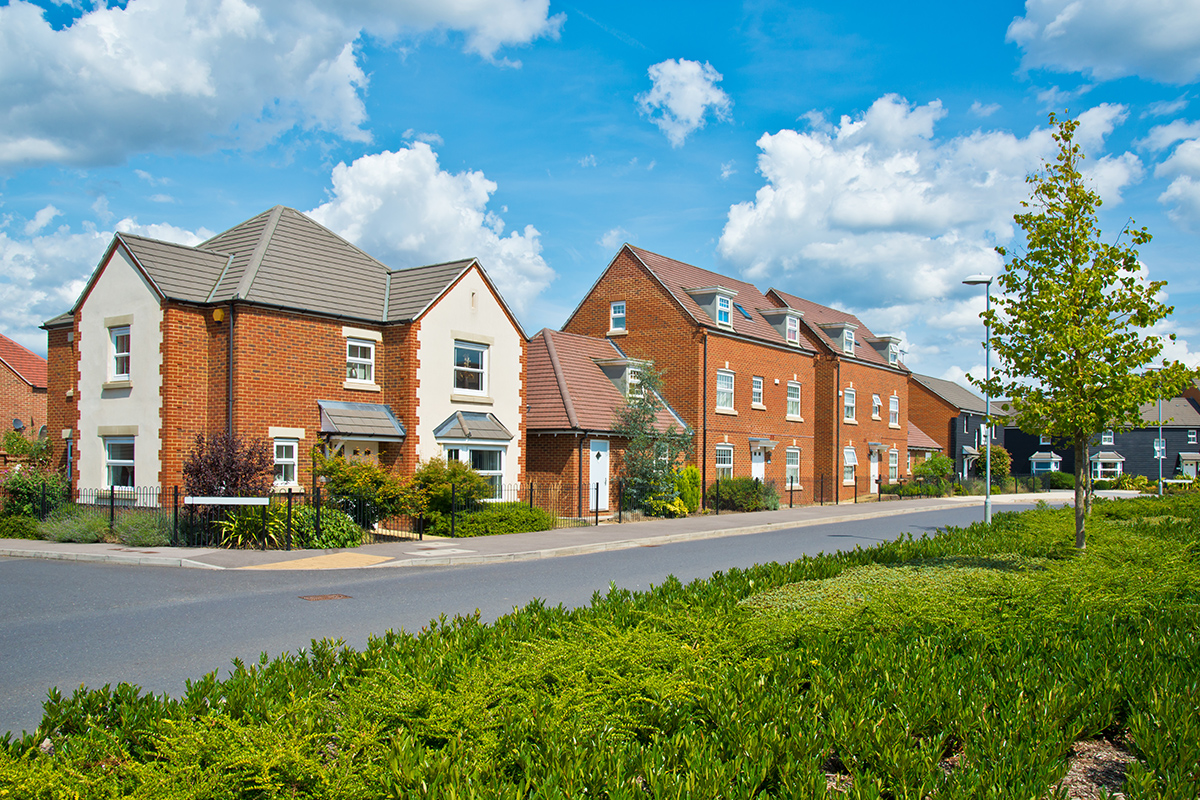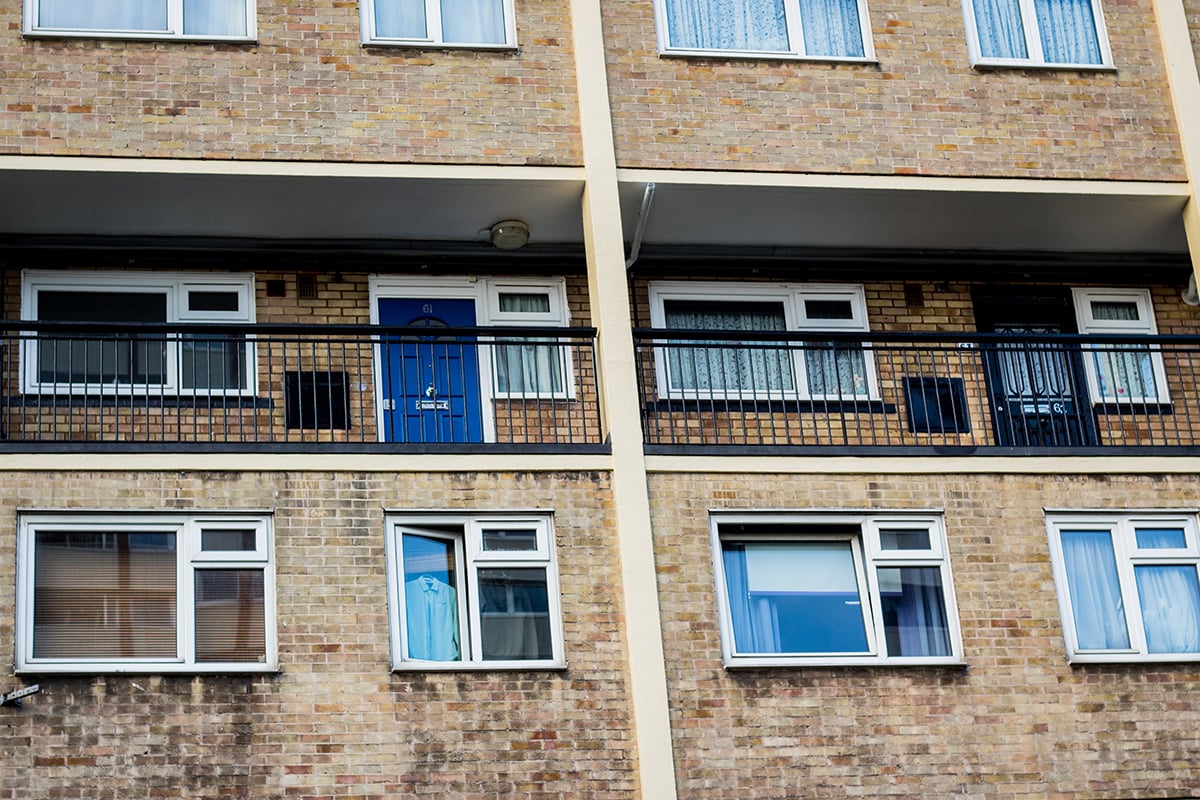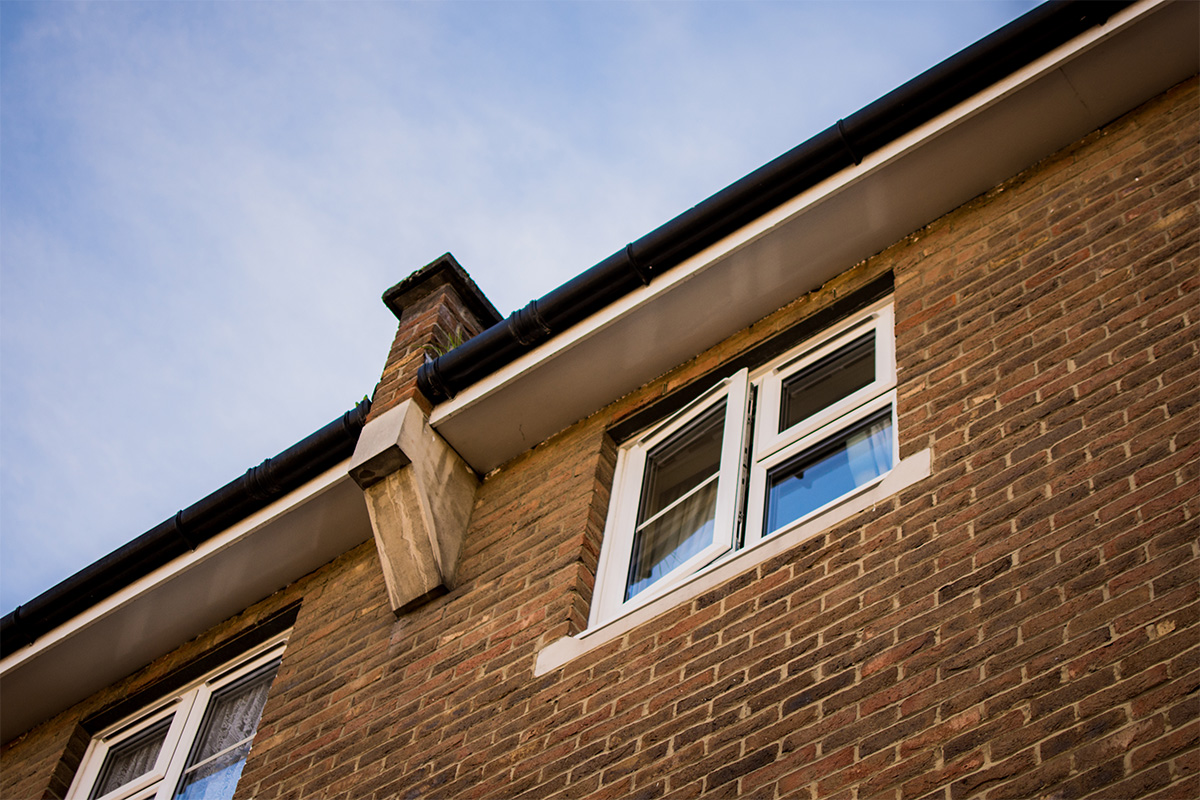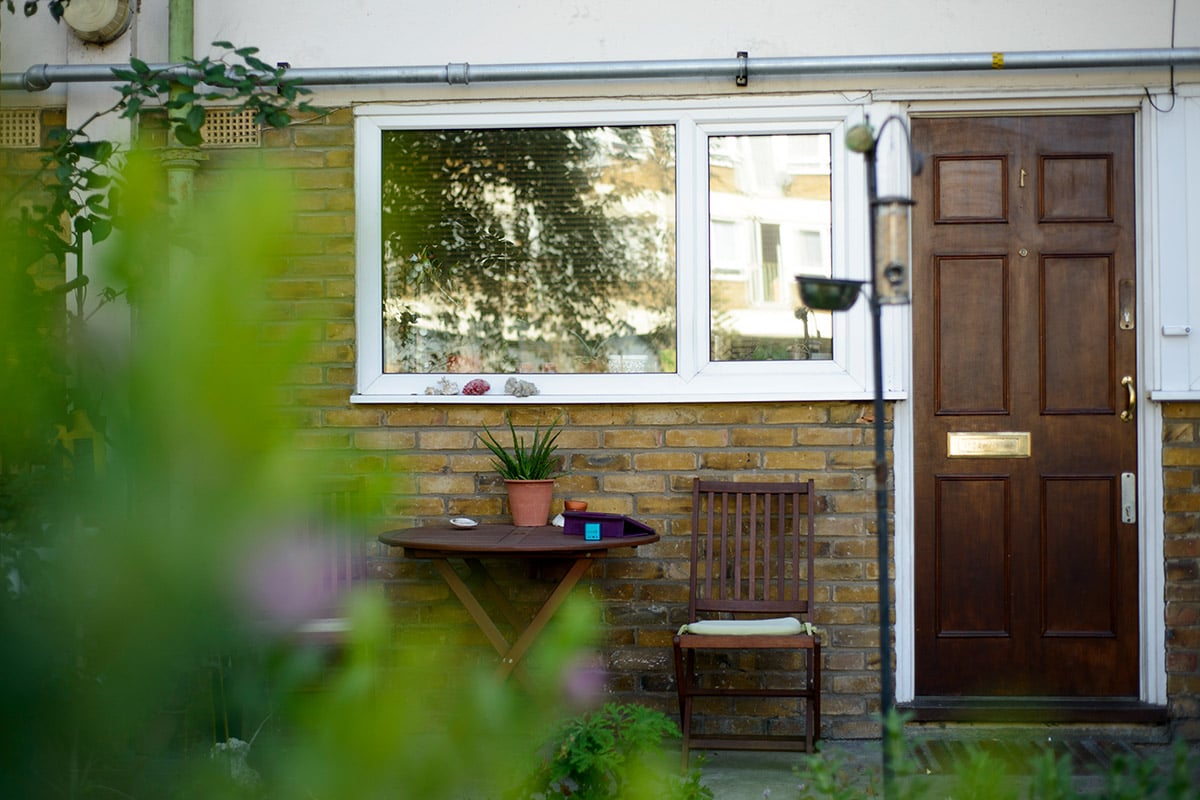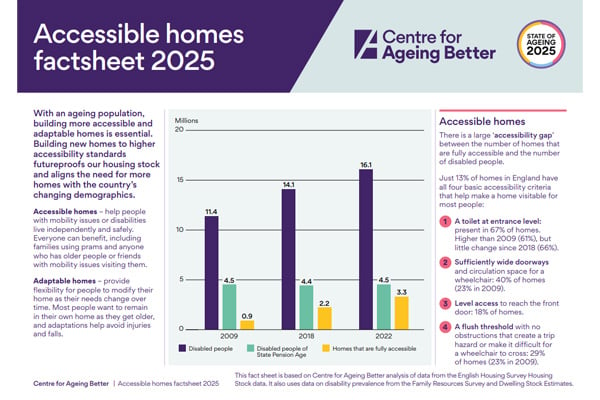Accessible and adaptable homes
All new homes should be designed to meet the needs of people throughout their lifetime.
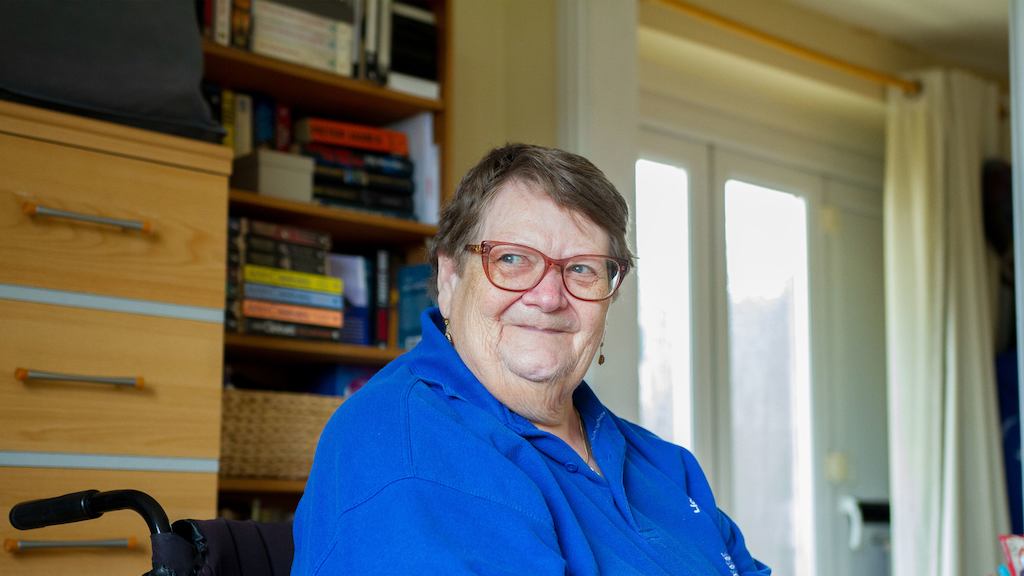
The mismatch between the homes we have and the homes we need is stark. Very few homes in England today have features that help people manage daily activities and live independently.
Accessibility standards
Currently, 91% of homes do not provide even the most basic accessibility features. The problem is that houses are usually designed with only the first occupants in mind, not the multitude of people who will call it ‘home’ across its lifespan.
Poorly designed homes can present enormous barriers to older and disabled people that can impact every aspect of life, from simply being able to get up and dressed in the morning to maintaining social contacts and holding down a job.
This is deeply important for all of us. While it’s not inevitable, the likelihood is that most of us will become less physically able as we grow older.
The accessibility standards for new-build homes are set out in Part M of the Building Regulations. There are three levels:
- Level 1: M4(1) - The basic level of accessibility required for all new homes to ensure that someone with limited mobility can enter and move around the main areas includes step-free access (where practical), wider doorways and an entrance-level toilet, where a home is visitable by someone with accessibility needs.
- Level 2: M4(2) – Makes homes easier to use and adapt over time if needed, includes step-free access throughout, wider walkways, a more accessible bathrooms, stronger walls.
- Level 3: M4(3) – Designed for wheelchair users, includes turning space for wheelchair movement, a fully accessible kitchen and bathroom, and space for a wheelchair lift if there’s more than one floor.
At present, new-build homes must be level 1. We believe this standard should be raised. We need many more homes that are fit for the future, and which give older and disabled people housing options that meet their needs. The higher accessibility level, M4(2), is currently only optional.
Homes built to M4(2) have a living area at entrance level, step-free access to all entrance-level rooms and facilities, wider doorways and corridors, and easy access to windows.
The M4(2) standard also makes homes more easily adaptable over time. This would benefit residents as they age and help those with reduced mobility and some wheelchair users. Homes would be fit for the needs of today’s residents and the residents of the future.
We need national action
We are calling for the government to set M4(2) as the minimum standard for new-build homes.
Our Housing Made for Everyone (HoME) Coalition, where we are campaigning for more accessible and adaptable homes.
There are currently 11.6 million disabled people, of all ages, living in England. Our population is also undergoing an age shift, meaning that, in less than 20 years’ time, one in four of us will be over 65. While poor health as we age is not inevitable, some of us will need help with daily activities as we get older.
We all need and deserve a good home that keeps us safe and healthy. Addressing the current shortage of accessible homes, and building the right new homes for our future, is crucial to protecting and improving the health and wellbeing of millions
